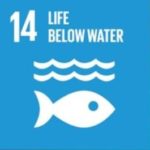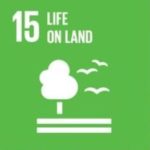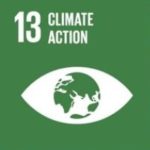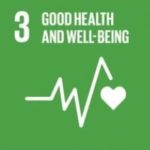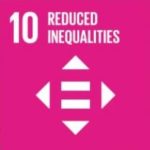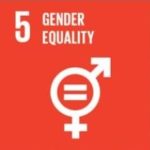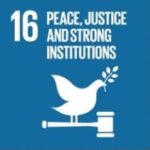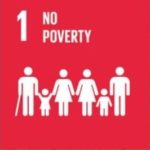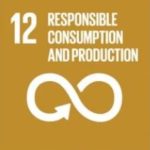4. The GAPFRAME calculation methodology
The GAPFRAME methodology is extensively discussed in our latest publication: Katrin Muff, Agnieszka Kapalka, Thomas Dyllick. Moving the world into a safe space – the GAPFRAME methodology. The International Journal of Management Education 16 (2018) 349-369.
4.1 The methodology overview
The GAPFRAME methodology is based on aggregation and transformation of large amount of publicly available data into a consistent dataset. The “heart” of the GAPFRAME lies in definition of ideal values for indicators that express the ideal state of the world. The indicators ideal values are employed to convert the indicators values, coming from diverse sources, into a normative 0-10 GAPFRAME scale. Tables 1 – 4 compile the GAPFRAME 4 dimensions, 24 issues and related 68 indicators together with their sources to provide a comprehensive overview of the GAPFRAME structure. All three highlighted aspects: the indicators data source, the notion of ideal values as well conversion of indicators into a normative 0-10 GAPFRAME scale are explained in details in the subsequent sections.
Table 1: List of indicators and their source: planet dimension
Table 2: List of indicators and their source: society dimension
Table 3: List of indicators and their source: economy dimension
Table 4: List of indicators and their source: governance dimension
 | ISSUE | INDICATOR | ||||||
| PLANET | NAME | DESCRIPTION | DATA SOURCE | IDEAL VALUE | RATIONALE | WORST VALUE | RATIONALE | |
| PLANET | 1. Biodiversity | 1. Extinction rate of animals | Extinction rate of animals calculated as a number of extinctions per million species-years (E/MSY) | Calculation based on IUCN Red List | 2 | Close to pre-industrial extinction rate. Based on smallest observable values | 100 | Close to largest observable values |
| 2. Protected terrestrial habitat areas | Protection of globally critical terrestrial biomes, as % of their globally proportional abundance. | Environmental Performance Index (EPI) | 100 | Indicator original scale is respected | 0 | Indicator original scale is respected | ||
| 2. Carbon quotient | 3. Carbon quotient | Carbon quotient (in global hectares per person) is a carbon footprint represented as a fraction of remaining (available) global biocapacity | Calculation based on Global Footprint Network - NFA 2016 ed. | 0.9 | Carbon footprint lower than available biocapacity | 5 | Close to largest observable values | |
| 3. Oceans | 4. Fish stock | Fish Stocks (FSOC) - Fraction (in %) of overexploited fish stocks & collapsed by economic zone | Environmental Performance Index (EPI) | 100 | Indicator original scale is respected | 0 | Indicator original scale is respected | |
| 5. Phosphate consumption / cultivated land | Phosphate total nutrients consumption (prod + imp - exp) in tons divided by cultivated land (km2) | UNEP | 0 | No use of fertilizers. Based on smallest observable values | 10 | Close to largest observable values | ||
| 4. Land & forests | 6. Soil quality | Use of Persistent Organic Pollutants (POPs) - Pesticide Regulation | Environmental Performance Index (EPI) | 100 | Indicator original scale is respected | 0 | Indicator original scale is respected | |
| 7. Organic farming | Organic farming as % of total agricultural area | Sustainable Society Foundation | 20 | Indicator target value is respected | 0 | Based on smallest observable values | ||
| 8. Land degradation (desertification) | Areas with a potential hazard of desertification (drylands) as % of total area | UNEP | 0 | No hazard of desertification. Based on lowest observable values | 100 | Based on largest observable values | ||
| 5. Clean air | 9. Exposure to air pollution | Population (in %) exposed to tiny particulate material (PM 2.5 µg/m3). Indicator code PM25 | Environmental Performance Index (EPI) | 100 | Indicator original scale is respected | 0 | Indicator original scale is respected | |
| 6. Water | 10. Renewable Water Resources | Renewable water resources as % of annual water withdrawals | Sustainable Society Foundation | 10 | Indicator original scale is respected | 1 | Indicator original scale is respected | |
| 11. Water quality | People (in %) reporting being satisfied with the quality of local water | OECD Better Life Index | 100 | Everyone is satisfied. Close to largest observable value | 60 | Based on smallest observable values | ||
| 7. Clean energy | 12. Renewable Energy | Consumption of renewable energy as % of total energy | Sustainable Society Foundation | 100 | Indicator target value is respected | 0 | Based on smallest observable values | |
| 13. Domestic use of solid fuels | Population (in %) using solid fuels | UNEP | 0 | Solid fuels are not used. Close to smallest observable values | 100 | Close to largest observable values | ||
| 8. Waste treatment | 14. Recovered & recycled solid municipal waste | The sum of compost and recycled municipal solid waste as % of total waste | Worldbank report - What a waste (2012) | 100 | Ideally, all waste can be recycled | 0 | Based on smallest observable values | |
| 15. Treatment of waste water | Treated waste water (in %). Indicator code WASTECXN | Environmental Performance Index (EPI) | 100 | Indicator original scale is respected | 0 | Indicator original scale is respected |
Table 1: List of indicators and their source: planet dimension
 | ISSUE | INDICATOR | ||||||
| SOCIETY | NAME | DESCRIPTION | DATA SOURCE | IDEAL VALUE | RATIONALE | WORST VALUE | RATIONALE | |
| SOCIETY | 9. Health | 16. Child survival | Probability of child surviving 5th birthday. Indicator code CHMORT | Environmental Performance Index (EPI) | 100 | Indicator original scale is respected | 0 | Indicator original scale is respected |
| 17. Sufficient food | Undernourished people as % of total population | Sustainable Society Foundation | 0 | Indicator target value is respected | 40 | Close to largest observable values | ||
| 18. Obesity rate | Population (in %) with a BMI of 30 | Social Progress Index | 0 | No obesity problem | 40 | Based on largest observable values | ||
| 19. Alcohol abuse | Adults (15+ years) with >60 grams of pure alcohol at least once in 30 days | World Health Organization (WHO) | 0 | No alcohol abuse | 40 | Based on largest observable values | ||
| 10. Equal opportunity | 20. Gender wage gap | Difference between male and female median wages divided by the male median wages | OECD | 0 | No gender wage gap | 40 | Based on largest observable values | |
| 21. Female representation in parliament | Proportion of seats held by women in national parliaments (in %) | OECD | 50 | Perfect gender balance | 10 | Based on smallest observable values | ||
| 22. Women presence in boards | Share of women in boards of directors in Forbes Global 500 companies | OECD | 50 | Perfect gender balance | 0 | Based on smallest observable values | ||
| 23. Income distribution (GINI) | Estimated income distribution by the World Bank | The World Bank | 0 | Indicator original scale is respected | 100 | Indicator original scale is respected | ||
| 11. Education | 24. Primary education, enrolment rate, net% | School enrolment rate of children (in %) | World Economic Forum Global Competitiveness Index (WEF GCI) | 100 | Enrolment is 100%. Based on largest observable values | 60 | Based on smallest observable values | |
| 25. Quality of educational system | Assessment of how well the educational system meets the needs of a competitive economy | World Economic Forum Global Competitiveness Index (WEF GCI) | 7 | Indicator original scale is respected | 1 | Indicator original scale is respected | ||
| 26. Youth in educational training | School enrolment rate (in %) of youth (15-19 years old) | OECD | 100 | Enrolment is 100%. Close to largest observable values | 50 | Based on smallest observable values | ||
| 27. Adult literacy rate | Adult literacy rate as a % of population (15+ years) | The World Bank | 100 | Everyone can write and read. Based on largest observable values | 30 | Based on smallest observable values | ||
| 12. Living conditions | 28. Access to electricity | Population (in %) with access to electricity | Environmental Performance Index (EPI) | 100 | Indicator original scale is respected | 0 | Indicator original scale is respected | |
| 29. Access to an improved drinking water | Population (in %) using an improved drinking water source | Environmental Performance Index (EPI) | 100 | Indicator original scale is respected | 0 | Indicator original scale is respected | ||
| 30. Safe sanitation | Population (in %) with sustainable access to improved sanitation | Sustainable Society Foundation | 100 | Indicator original scale is respected | 0 | Indicator original scale is respected | ||
| 31. Safety on the road | Estimated road traffic fatal injury deaths per 100'000 inhabitants | Social Progress Index | 0 | No fatal injuries. Close to smallest observable values | 40 | Based on largest observable values | ||
| 13. Social integration | 32. Tolerance for homosexuals | Degree of tolerance for homosexuals | Social Progress Index | 1 | Indicator original scale is respected | 0 | Indicator original scale is respected | |
| 33. Minority discrimination | Discrimination and violence against minorities | Social Progress Index | 0 | Indicator original scale is respected | 10 | Indicator original scale is respected | ||
| 14. Quality of life | 34. Life satisfaction | Average self-evaluation on a scale from 0-10 | OECD | 10 | Indicator original scale is respected | 0 | Indicator original scale is respected | |
| 35. Quality of support network | Population (in %) with friends/relatives to rely on if needed | OECD Better Life Index | 100 | People support each other. Close to largest observable values | 70 | Based on smallest observable values | ||
| 36. Work-Life Balance | Employees (in %) whose usual hours of work per week are 50 hours or more | OECD Better Life Index | 0 | Work-Life balance is preserved. Based on smallest observable values | 30 | Based on largest observable values | ||
| SOCIETY | 37. Poverty among population | Poverty headcount ratio at national poverty lines (% of population) | The World Bank | 0 | No poverty. In accordance with SDGs | 75 | Based on largest observable values |
Table 2: List of indicators and their source: society dimension
 | ISSUE | INDICATOR | ||||||
| ECONOMY | NAME | DESCRIPTION | DATA SOURCE | IDEAL VALUE | RATIONALE | WORST VALUE | RATIONALE | |
| ECONOMY | 15. Employment | 38. Job security | Employees (in %) with risk of losing job | OECD Better Life Index | 0 | No risk of loosing job. Close to smallest observable values | 15 | Based on largest observable values |
| 39. Youth unemployment | Youth unemployment, as % of total labour force ages 15-24 | The World Bank | 0 | No unemployment. Close to smallest observable values | 60 | Based on largest observable values | ||
| 40. Unemployment rate | Number of people seeking work and being long-term unemployed, as % of employed | Sustainable Society Foundation | 0 | Indicator target value is respected | 30 | Based on largest observable values | ||
| 41. Slave labour | Proportion of the population in modern slavery | Global Slavery Index | 0 | No slavery. Close to smallest observable values | 1.5 | Based on largest observable values | ||
| 16. Resource use | 42. Energy intensity | Cost of primary energy consumption, as % GDP | The World Bank | 2 | Based on smallest observable values | 20 | Based on largest observable values | |
| 43. Natural resources depletion | Adjusted savings: natural resources depletion multiplied by GINI | The World Bank | 0 | No depletion of natural resources. Based on smallest observable values | 15 | Based on largest observable values | ||
| 17. Sustainable consumption | 44. Carbon consumption / inhabitant | Carbon national production and transfers (imports and exports), in million tons of carbon / year, divided by inhabitants | Global Carbon Project | 0 | Carbon consumption approaching zero. Value set by an expert | 70 | Based on largest observable values | |
| 45. Energy Savings | Energy savings 2008-2012 in % | Sustainable Society Foundation | 0.4 | Based on largest observable values | -0.4 | Based on smallest observable values | ||
| 18. Sustainable production | 46. Irrigated agricultural land | Irrigated agricultural land as % of total agricultural land | The World Bank | 0 | No irrigation. Based on smallest observable values. | 35 | Based on largest observable values | |
| 47. Companies with a sustainability report | Number of companies that complete a GRLI report, as % of all stock-quoted companies | KMPG | 100 | All companies complete GRLI report. Based on largest observable values. | 25 | Based on smallest observable values | ||
| 48. Soundness of banks | Assessment of soundness of banks | World Economic Forum Global Competitiveness Index (WEF GCI) | 7 | Indicator original scale is respected | 1 | Indicator original scale is respected | ||
| 19. Innovation | 49. Ease of access to loans | Assessment of how easy it is to obtain a bank loan with a good business plan and no collaterals | World Economic Forum Global Competitiveness Index (WEF GCI) | 7 | Indicator original scale is respected | 1 | Indicator original scale is respected | |
| 50. Availability of latest technologies | Assessment to what extent latest technologies are available | World Economic Forum Global Competitiveness Index (WEF GCI) | 7 | Indicator original scale is respected | 1 | Indicator original scale is respected | ||
| 51. Internet users | Number of internet users as % of population | Social Progress Index | 100 | Everyone can use internet. Close to on largest observable values. | 1 | Based on smallest observable values |
Table 3: List of indicators and their source: economy dimension
 | ISSUE | INDICATOR | ||||||
| GOVERNANCE | NAME | DESCRIPTION | DATA SOURCE | IDEAL VALUE | RATIONALE | WORST VALUE | RATIONALE | |
| GOVERNANCE | 20. Public finance | 52. Government debt | General government debt, as % of GDP | Sustainable Society Foundation | 2.5 | Indicator target value is respected | 150 | Based on largest observable values |
| 53. Budget balance | Government budget balance, as % of GDP | World Economic Forum Global Competitiveness Index (WEF GCI) | 1 | Budget with no deficit. Ideally, with a small surplus | -15 | Based on smallest observable values (deficit) | ||
| 21. Structural resilience | 54. Quality of overall infrastructure | Assessment of infrastructure (transport, telephony, energy) | World Economic Forum Global Competitiveness Index (WEF GCI) | 7 | Indicator original scale is respected | 1 | Indicator original scale is respected | |
| 55. Tolerance for immigrants | Degree of tolerance for immigrants | Social Progress Index | 1 | Indicator original scale is respected | 0 | Indicator original scale is respected | ||
| 56. Public sector corruption | Perceived level of public sector corruption | Social Progress Index | 100 | Indicator original scale is respected | 0 | Indicator original scale is respected | ||
| 22. Peace & cooperation | 57. Share of voice - Freedom of assembly | The extent to which freedoms of assembly and association are subject to actual governmental limitations or restrictions | Social Progress Index | 2 | Indicator original scale is respected | 0 | Indicator original scale is respected | |
| 58. Freedom of movement | Both freedom to move domestically and abroad with right to return home | Social Progress Index | 4 | Indicator original scale is respected | 0 | Indicator original scale is respected | ||
| 59. Strength of legal rights | Collateral and bankruptcy laws protecting and facilitate lending | The World Bank | 12 | Indicator original scale is respected | 0 | Indicator original scale is respected | ||
| 60. Terrorism | Global terrorism, country ranking | Global Terrorism Index | 0 | Indicator original scale is respected | 10 | Indicator original scale is respected | ||
| 23. Business integrity | 61. Ethical behaviour of firms | Assessment of ethical behaviour of companies with public officials, politicians and other firms | World Economic Forum Global Competitiveness Index (WEF GCI) | 7 | Indicator original scale is respected | 1 | Indicator original scale is respected | |
| 62. Effectiveness of anti-monopoly policy | Assessment of extent to which anti-monopoly policy promotes competition | World Economic Forum Global Competitiveness Index (WEF GCI) | 7 | Indicator original scale is respected | 1 | Indicator original scale is respected | ||
| 63. Healthy business support | Number of procedures to start a business | World Economic Forum Global Competitiveness Index (WEF GCI) | 2 | Ideally, only 2 procedures needed to start a new business. Based on smallest observable values | 15 | Based on largest observable values | ||
| 24. Transparency | 64. Good governance | World Bank Index - total score | Sustainable Society Foundation | 15 | Indicator original scale is respected | -15 | Indicator original scale is respected | |
| 65. Policy Knowledge | The extent to which citizens are informed of government policymaking | Sustainable Governance Indicators (SGI) | 10 | Indicator original scale is respected | 1 | Indicator original scale is respected | ||
| 66. Legal Certainty | The extent to which government and administration act on the basis of and in accordance with legal provisions to provide legal certainty | Sustainable Governance Indicators (SGI) | 10 | Indicator original scale is respected | 1 | Indicator original scale is respected | ||
| 67. Freedom of expression | Press Freedom Index | Social Progress Index | 0 | Indicator original scale is respected | 100 | Indicator original scale is respected | ||
| GOVERNANCE | 68. Judicial independence | Assessment of degree of judicial independence from members of government, citizens, or firms | World Economic Forum Global Competitiveness Index (WEF GCI) | 7 | Indicator original scale is respected | 1 | Indicator original scale is respected |
Table 4: List of indicators and their source: governance dimension
